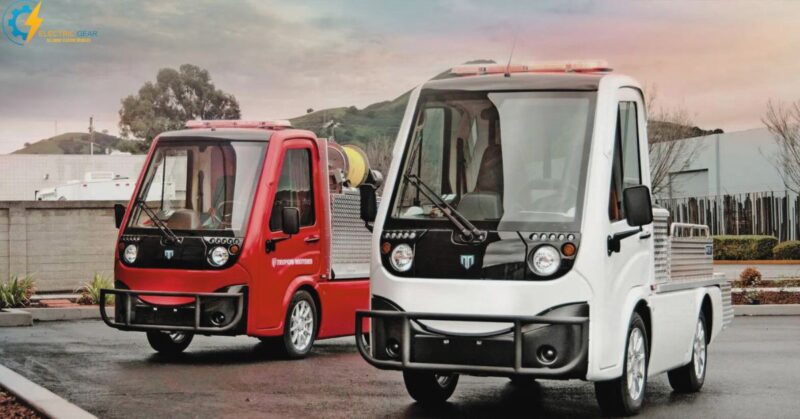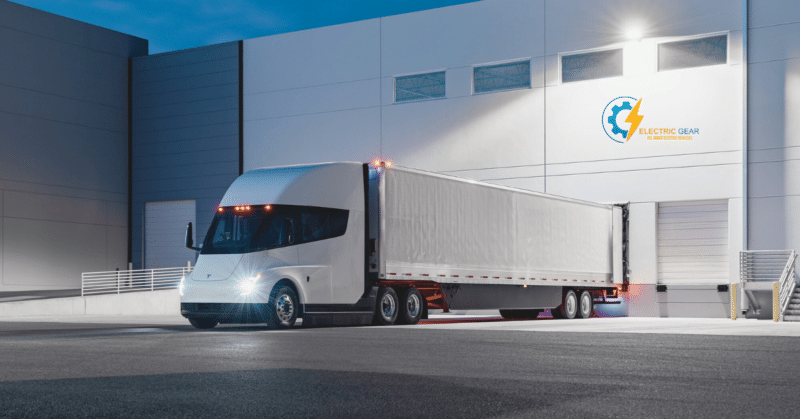In the last few years, something big happened in the car world. We started seeing self-charging electric cars pop up. These cars are super cool because they don’t need gas like regular cars. Instead, they charge themselves up! People are saying they’re the future of getting around because they’re good for the planet and they work well.
What is a Self-Charging Electric Vehicle?
An electric motor and an internal combustion engine exist in a self-charging EV. That’s why, it is known as a self-charging hybrid electric vehicle (HEV). It charges itself while you are driving as against an all-electric vehicle. They rely on both an electric motor and a gasoline engine, not solely electricity.
It makes use of regenerative braking, which is a force generated as the vehicle slows down to charge the battery using a combination of conventional fuel and EV technology.
As a result, you won’t ever need to charge your car while you’re at home and it lowers the possibility that you will ever run out of your electric vehicle’s battery charging while you are driving. It stores electrical energy in a battery before using it to power the vehicle.
How Does a Self-Charging EV Work?
This type of vehicle does not need to be charged from an external source, unlike a fully electric vehicle, which needs to be plugged in via a charger, whether at home or an EV charging station.
While driving, the engine of a self-charging EV turns the generator which charges the battery. An engine-powered generator is used to recharge the vehicle’s battery. The electric motor takes energy from the battery to power the wheels.
Electric vehicles that recharge themselves do not need to be plugged in. While you are driving, they charge their batteries with energy as they charge themselves utilizing the power from conventional fuel.
What’s the difference between plug-in and self-charging hybrid cars?
The main difference between plug-in hybrids (PHEVs) and self-charging hybrids (HEVs) lies in how they recharge their batteries.
Plug-in hybrids require external charging via a power outlet or charging station to replenish their battery, offering longer electric-only driving ranges. In contrast, self-charging hybrids use regenerative braking and the internal combustion engine to charge their batteries, relying less on external charging.
Advantages and Disadvantages of Self-Charging EVs
| Advantages | Disadvantages |
|---|---|
| it has improved fuel efficiency. Because it charges the battery through regenerative braking instead of relying solely on the engine. Therefore, it uses less fuel. | Its high upfront cost is one of its major drawbacks. That’s why, some people may find it difficult to afford them. |
| Produce fewer greenhouse gases. It means that they are environmentally friendly, which lessens air pollution. | Make use of fossil fuels. |
| It doesn’t need to be plugged in for charging. It is charged while you are driving. This feature is ideal for drivers who suffer from range anxiety. | Less efficient or powerful. |
| A small battery, which has the drawback of not covering long distances on energy other than gasoline. |
Some Best Self-charging EVs
Now, we are going to discuss some self-charging EVs available in the market. You have gone through their benefits and drawbacks and how such a vehicle works. Go on to read these, which you can purchase as your next or future vehicle by choosing from these.
| Features | Toyota Prius | Toyota RAV4 2.5 Hybrid | Honda Civic | Toyota Corolla |
|---|---|---|---|---|
| Price | Starts at $27,450 (USD) for the LE trim | Manufacturer's starting MSRP varies depending on the trim level. | Starts at $25,000 | $23,600 |
| Range | LE and XLE trim with FWD: Up to 57 mpg (combined) | up to 41 mpg. | Up to 52 mpg | Up to 53 mpg |
| Engine | 2.0L 4-cylinder engine + electric motor | 2.5-liter four-cylinder engine | 2.0L 4-cylinder engine + electric motor | 1.8L 4-cylinder engine + electric motor |
| Battery | Lithium-ion battery pack | Nickel-metal hydride (Ni-MH) | Lithium-ion | Lithium-ion |
| Top speed | 118 mph (estimated) | Information not readily available. | 141 mph | 125 mph |
| 0–62mph | 7.0 seconds (estimated) for AWD models 7.2 seconds (estimated) for FWD models | 8.1 seconds (AWD) or 8.4 seconds (FWD) | 8.0 seconds | 8.1 seconds |
| Boot space | 27.4 cubic feet | 37.5 cubic feet behind the rear seats, 69.8 cubic feet with the rear seats folded | 404 liters | 390 liters |
Related article: Do Electric Cars Have Catalytic Converters?
The Future Outlook
Looking ahead, things are looking bright for self-charging electric cars. There are lots of smart people working on making them even better, and both the government and companies are putting more money into them.
Exciting things like new kinds of batteries, like solid-state ones and ones made with graphene, could make these cars even cooler. Plus, as we see more solar panels and wind turbines around, we might start seeing them built right into cars, making them charge up even faster and easier.
Case Studies and Success Stories
Let me tell you about some real stories of people using self-charging electric cars. These stories show how awesome these cars can be! People who drive them save money on fuel and help the environment.
Whether it’s regular folks or big companies using these cars, everyone’s seeing the benefits, like using less energy and spending less money. It’s proof that electric cars are making a big difference!
Conclusion
So, in conclusion, self-charging electric cars is a big deal. They’re changing how we get around in a really good way. They’re better for the environment, they save money, and they work well. With more cool technology and help from the government, they’re going to keep getting even better. So get ready for a future where electric cars rule the roads and make our world cleaner and greener!
Frequently Asked Questions
How Far Can Self-Charging EVs Go?
It can travel up to 20-30 miles only in electric mode, without switching to the Internal Combustion Engine (ICE).
Why Self-Charging EVs Have Smaller Batteries?
There are various reasons why the battery is smaller, but the major one is, a larger battery can never be fully charged just from braking energy. That’s why, larger batteries are not put in such vehicles.
Why Self-Charging EVs Are Considered Better than Full-Electric Cars?
Due to this reason, EVs which can charge themselves (self-charging EVs) are suitable for fulfilling the drivers charging needs, as compared to all-electric vehicles, which take several hours or sometimes a day to fully recharge.
Are self-charging electric cars reliable for long-distance travel?
Self-charging electric cars are equipped with advanced battery technology and regenerative braking systems, making them suitable for long-distance travel. However, users should plan their routes carefully and ensure access to charging stations along the way.
Are Tesla Vehicles Self-Charging?
Teslas are purely electric vehicles (EVs) that require external charging. They are not self charging

Imran is an experienced content writer who crafts engaging and informative articles for a variety of industries. With a keen eye for detail and a passion for storytelling, Imran delivers high-quality content that resonates with readers. Whether he’s writing blog posts, social media content, or website copy, Imran is committed to delivering compelling content that drives results.







